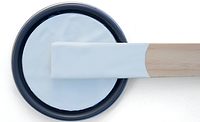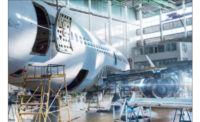Cortec Unveils Plan for Preservation of Grounded Aircraft

ST PAUL, MN — As hundreds of aircraft remain grounded due to decreasing air travel demand amid pandemic restrictions, the question becomes: how can airlines preserve as much value as possible while high-dollar assets sit idle for an indefinite period? Though everyone hopes for the best, it is also important to prepare for the worst, as lower travel rates are expected for some time and may take years to rebound. In the face of unexpected losses, good preservation is vital to avoid further damage and keep aircraft ready to put back into the air on short notice.
To address this need, Cortec® Corp. has designed an aircraft preservation guide based on the practical advantages of VpCI® Technology. VpCI Technology protects by forming a molecular corrosion-inhibiting layer on metal surfaces to which it is directly applied (contact-phase protection). In many cases, it also encompasses vapor-phase action when Vapor phase Corrosion Inhibitors diffuse through the air to deliver protection to all exposed metal surfaces within a void space, even those to which they are not directly applied. This is particularly useful for airplane internals such as cockpits, baggage compartments, passenger seating areas, and electronic systems, where VpCI molecules can be used to condition entire enclosures with a protective atmosphere. VpCI preservation does not require continuous monitoring and, in many cases, eliminates or reduces the need to remove preservation materials upon commissioning.
Cortec’s aircraft preservation guide recommends externally washing down jets and helicopters with VpCI-415 prior to layup. This flash-corrosion-inhibiting cleaner conforms to Boeing D6-17487 Rev P and is also a MIL-PRF-87937D qualified cleaner/degreaser. After cleaning, VpCI additives should be added to fuel tanks, gearboxes, and hydraulic systems. VpCI-111 Emitters, VpCI®-308 Pouches, and VpCI-337 fogging fluid should be applied in electronic systems, fuselage areas and engines, respectively. Some components, such as engines, may also benefit from shrink-wrapping in VpCI-126 HP UV, with VpCI dosed into the flow path. A temporary coating such as VpCI-369D will provide lubrication and corrosion protection for moveable joints such as wing flaps, ailerons, door hinges and landing gear. Cortec also suggests biological odor control solutions in the form of Bionetix® International’s ECO-SEPT™ and PORTA-TREAT™ for toilet and holding tank systems.
Cortec Corp. is on call to answer customers’ preservation questions and assist in designing a practical, effective and user-friendly preservation method.
Contact Cortec today for advice and to learn more about its aircraft preservation packet: https://www.cortecvci.com/contact-us/.
View the company’s new “Long-Term Storage of Modern Aircraft” guide at https://www.cortecvci.com/long-term-storage-of-modern-aircraft/.
Read more in the company’s aircraft brochure at https://www.cortecvci.com/Publications/Brochures/Aircraf_Brochure.pdf.
Looking for a reprint of this article?
From high-res PDFs to custom plaques, order your copy today!








